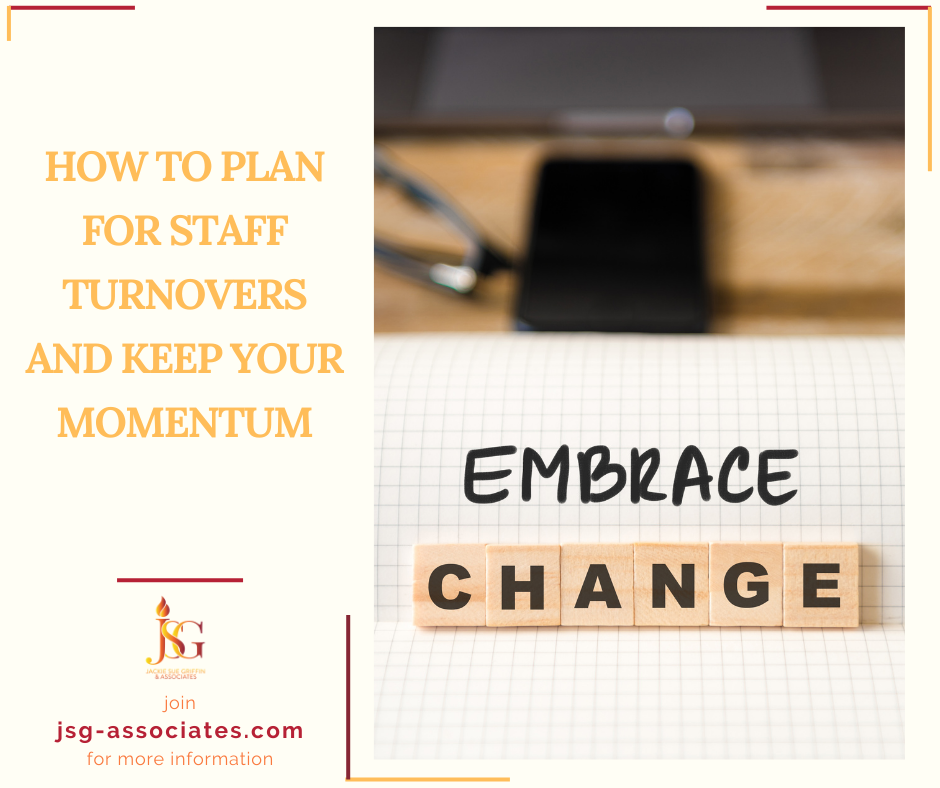
27 Mar How to Plan for Staff Turnovers and Keep Your Momentum
Posted at 00:01h
in JSG Blog, JSG Blog Category 1, Non-Profit Resources, NP Blog Category 1
0 Comments
Staff turnover is an inevitable challenge for nonprofit organizations, but when approached properly, it can be an opportunity for growth. While turnover can disrupt operations and impact a team’s morale, planning ahead can help nonprofits smoothly navigate transitions and keep upward momentum going. Here are some strategies for effectively planning and managing staff turnovers:
- Succession Planning: One of the most critical steps in preparing for staff turnovers is making sure you have a qualified team on the bench. Proper succession planning means making sure that you are giving current employees professional development and mentorship opportunities so that they are building skills they can use in larger roles. Keep track of who did well in critical roles and who took on more responsibilities. By starting to develop the team’s talents and empowering your staff to take on leadership roles, nonprofits can change rocky turnovers into career launching points for others.
- Knowledge Management: One of the most challenging parts of staff changes is making sure that essential knowledge is not lost during the transition. Setting up a knowledge management system can be as simple as keeping all of your passwords in one place or taking digitalized notes. Writing down best practices with standard operating procedures for different tasks can also ensure that processes stay uniform despite staff changes. Every nonprofit should have shared platforms and storage systems set up so that information is not lost. Centralizing documents and resources also allows you to take the time to facilitate knowledge-sharing sessions among team members, especially in remote work environments, where knowledge can become isolated within roles. By making habits out of these practices, nonprofits can create smoother transitions when staff members leave.
- Cultivating a Resilient Culture: Building a resilient organizational culture is what really makes a difference in weathering staff turnovers. Nonprofits should strive for a culture of adaptability, transparency, and continuous learning, which allows staff to weather change and trust in their team members to work through these changes together. Honest communication, regular check-ins, and opportunities for feedback help build trust across the nonprofit. Additionally, making a point of investing in employee well-being and professional development can uplift your team’s morale and engagement, reducing the likelihood of turnover and ensuring staff members feel valued and supported.
- Building External Networks: Nonprofits can also lower the impact of staff turnovers by building external networks and partnerships to lean on when extra help is needed. Developing these relationships with freelancers, consultants, and other organizations can provide access to outside resources and expertise during periods when you’re hiring or training for new positions. By using these external connections, nonprofits can find diverse skill sets and perspectives, maintaining and even improving momentum in the face of turnover.
Staff turnover is inevitable, but with careful planning, organizations can minimize struggles for the team. By starting the process of succession planning, knowledge management, developing a resilient culture, and building external networks, nonprofits can weather through staff changes and continue in their mission-driven work.

No Comments